 United States (English)
United States (English)
Shopping Cart
Empty Cart
Part No: {{entry.product.code}}
Quantity: {{entry.quantity}}
Total {{cartInfo.totalPriceWithTax.value | currency:"$"}}
Total {{0 | currency:"$"}}
 United States (English)
United States (English)
Part No: {{entry.product.code}}
Quantity: {{entry.quantity}}
Total {{cartInfo.totalPriceWithTax.value | currency:"$"}}
Total {{0 | currency:"$"}}
Asia Pacific
Europe, Middle East, Africa
 România (Română)
România (Română)
 European Union (English)
European Union (English)
 België (Nederlands)
België (Nederlands)
 Belgique (Français)
Belgique (Français)
 France (Français)
France (Français)
 Deutschland (Deutsch)
Deutschland (Deutsch)
 Italia (Italiano)
Italia (Italiano)
 Nederland (Nederlands)
Nederland (Nederlands)
 Polska (polski)
Polska (polski)
 Россия (русский)
Россия (русский)
 South Africa (English)
South Africa (English)
 España (Español)
España (Español)
 Україна (українська)
Україна (українська)
 United Kingdom (English)
United Kingdom (English)
 Česko (Česká republika)
Česko (Česká republika)
 United Arab Emirates (English)
United Arab Emirates (English)
North America
When shopping for a vehicle, one of the first decisions you’re confronted with is what type of drivetrain to get. From front-wheel drive to all-wheel drive, there’s a drivetrain to fit just about any driving style.
While you may be familiar with the different drivetrains and their acronyms – FWD, RWD, AWD, 4WD – do you know the differences between two-wheel drive and four-wheel drive? What about the differences between all-wheel drive and four-wheel drive? After reading our drivetrain guide, you’ll have the information you need to make an informed decision.
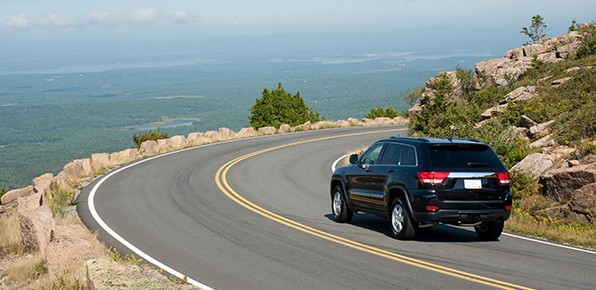
Your vehicle’s drivetrain works with the engine to deliver power to the wheels. The most common types of drivetrains are front-wheel drive (FWD), rear-wheel drive (RWD), four-wheel drive (4WD) and all-wheel drive (AWD).
The majority of vehicles on the road today are powered by front-wheel drive systems. In this system, the front wheels provide the power. All of the drivetrain components are located in the front of the vehicle which increases traction in the front wheels. Vehicles with front-wheel drive are typically lighter, helping to improve gas mileage.
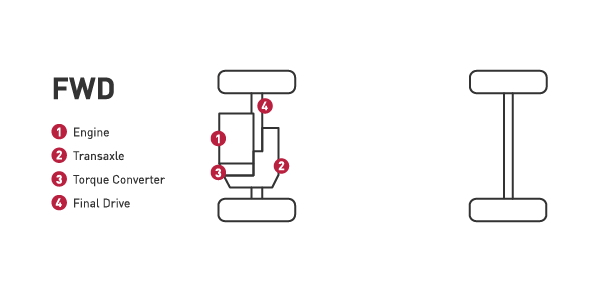
Once the industry standard, a rear-wheel drive system relies on the rear wheels to deliver the power. Commonly found on trucks and performance vehicles, RWD gives needed traction with heavy loads and optimal handling on performance cars. One drawback of rear-wheel drive is reduced traction on slippery roads; this might not be ideal for snowy climates.
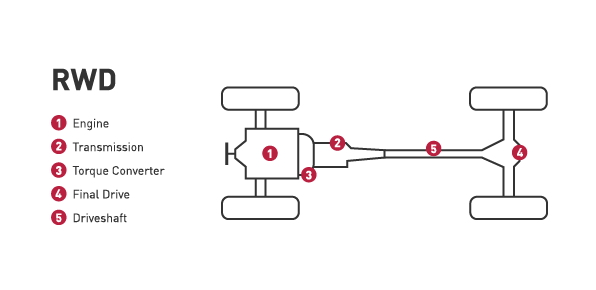
A four-wheel drive system features two driveshafts and a transfer case to deliver power to all four wheels. Today’s 4WD systems are either full-time or part-time. In a full-time system, the vehicle automatically switches between two-wheel and four-wheel drive while a part-time system requires the driver to manually engage the four-wheel drive system. 4WD shines in heavy snow and off-road situations.
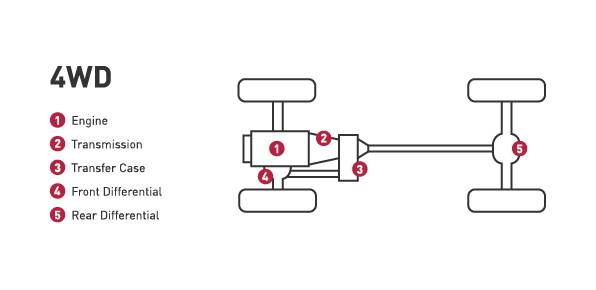
AWD delivers power to all four wheels. Most all-wheel drive systems are always on, using sensors to determine which wheel needs power. However, be aware that systems vary and some all-wheel drive setups stay in two-wheel drive most of the time and only go into all-wheel drive mode when the sensors detect the vehicle is losing traction.
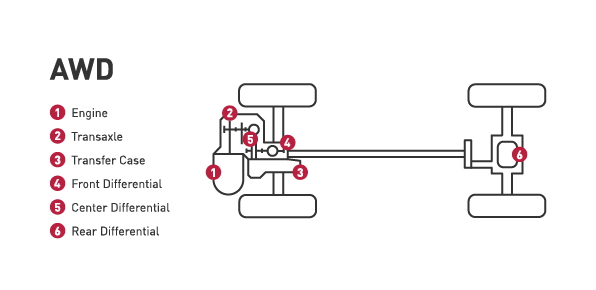
Examining both the climate you drive in and your driving habits will help you determine which drivetrain should be on your next vehicle. For warm climates and those that get light snow, front-wheel drive is ideal. If performance and handling are important to you, rear-wheel drive can give you the results you are looking for.
If you live in a region that experiences moderate snowfall totals, you might want to consider all-wheel drive. AWD can give you the traction you need to power through that overnight snowfall. For those who live in regions that get a heavy amount of snow, enjoy off-roading or tow a trailer, four-wheel drive could be perfect for you. You’ll appreciate the improved traction that can help you crawl over rocks, push through deep snow and tow your trailer with ease.
Learn more about quality driveline parts, find your car part, or find a local car repair shop today.
The content contained in this article is for entertainment and informational purposes only and should not be used in lieu of seeking professional advice from a certified technician or mechanic. We encourage you to consult with a certified technician or mechanic if you have specific questions or concerns relating to any of the topics covered herein. Under no circumstances will we be liable for any loss or damage caused by your reliance on any content.